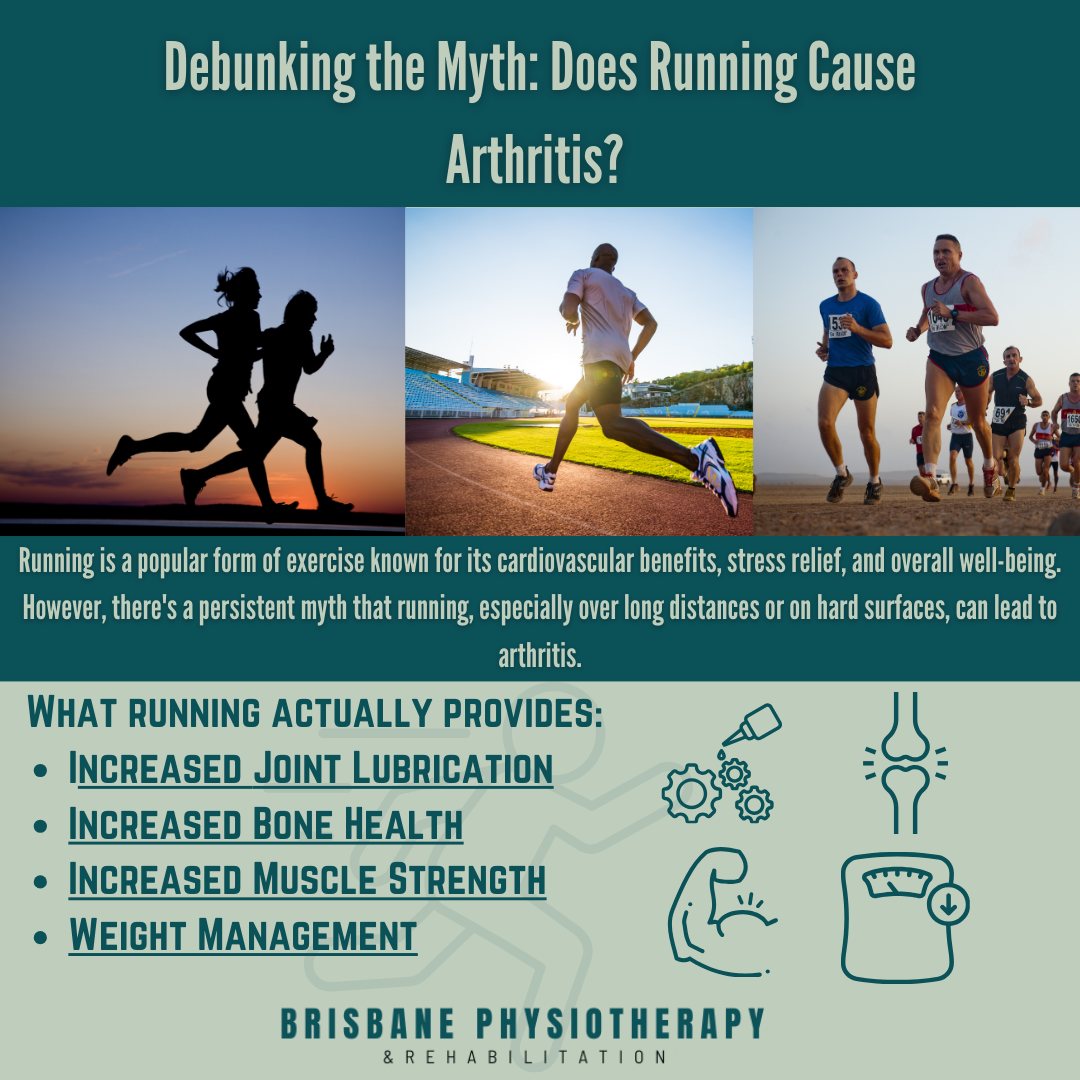Debunking the Myth: Does Running Cause Arthritis?
Introduction:
Running is a popular form of exercise known for its cardiovascular benefits, stress relief, and overall well-being. However, there's a persistent myth that running, especially over long distances or on hard surfaces, can lead to arthritis. In this blog post, we'll explore the truth behind this belief from a physiotherapy perspective, examining the relationship between running and arthritis and providing evidence-based insights to debunk the myth.
Understanding Arthritis:
Arthritis is a broad term that encompasses various inflammatory conditions affecting the joints, including osteoarthritis (OA) and rheumatoid arthritis (RA). OA, the most common form of arthritis, involves degeneration of the joint cartilage and underlying bone, leading to pain, stiffness, and reduced mobility. RA, on the other hand, is an autoimmune disease characterised by inflammation of the joint lining, resulting in pain, swelling, and joint deformity.
The Impact of Running on Joint Health:
Contrary to popular belief, numerous studies have shown that moderate running does not increase the risk of developing arthritis and may even have protective effects on joint health. In fact, regular physical activity, including running, has been associated with several benefits for joint function and overall musculoskeletal health, including:
Joint Lubrication: Running stimulates the production of synovial fluid, a lubricating fluid that nourishes and protects the joint surfaces, promoting optimal joint function and mobility.
Bone Health: Weight-bearing activities like running help maintain bone density and strength, reducing the risk of osteoporosis and fractures, which are common complications of arthritis.
Muscle Strength: Running strengthens the muscles surrounding the joints, providing stability and support and reducing the load on the joint structures, which can help alleviate symptoms of arthritis.
Weight Management: Running is an effective form of aerobic exercise for calorie burning and weight management, which can help reduce the mechanical stress on the joints and alleviate symptoms of arthritis, particularly in weight-bearing joints like the knees and hips.
Mitigating Risk Factors:
While running itself does not cause arthritis, certain factors may increase the risk of joint injury and exacerbate symptoms in individuals predisposed to arthritis, including:
Overtraining: Excessive training volume or intensity without adequate rest and recovery can increase the risk of overuse injuries and joint damage.
Poor Biomechanics: Running with improper technique or biomechanical imbalances can lead to excessive stress on certain joints and tissues, increasing the risk of injury and inflammation.
Previous Injuries: A history of joint injuries, such as ligament sprains or meniscal tears, may predispose individuals to arthritis in the affected joint later in life.
Genetic Factors: Some individuals may have a genetic predisposition to arthritis or joint degeneration, which can influence their risk of developing arthritis regardless of their level of physical activity.
Conclusion:
In conclusion, running does not cause arthritis, and moderate running is generally safe and beneficial for joint health. Regular physical activity, including running, plays a crucial role in maintaining joint function, bone health, and overall musculoskeletal fitness. However, it's essential to approach running with proper training techniques, adequate rest and recovery, and attention to individual risk factors to minimise the risk of injury and optimise joint health. As always, if you have concerns about running or arthritis, consult with a physiotherapist or healthcare professional for personalised advice and guidance tailored to your specific needs and circumstances.
